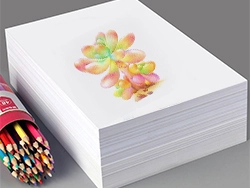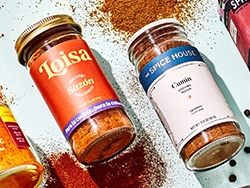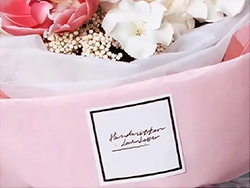
In the world of modern packaging, can labels play a vital role in ensuring product appeal, brand identity, and consumer trust. Whether used on glass jars or metal cans, pressure-sensitive adhesive labels offer a practical and efficient solution for both manufacturers and distributors.
From artisanal jam jars to mass-produced canned food, the right labeling approach not only enhances the shelf appeal but also ensures compliance with regulatory standards. In this guide, we'll explore how can labels are applied, how to maintain them properly, and how to remove them safely—without leaving unwanted residue behind.
What Are Can Labels?
Can labels refer to self-adhesive labels applied to various types of containers, particularly glass jars and metal cans. These labels are designed to adhere firmly to the surface, resist moisture and heat, and maintain print clarity throughout a product's lifecycle.
Commonly made from paper, BOPP, or synthetic films, can labels are preferred for their durability, ease of application, and compatibility with automated labeling systems. They are ideal for food and beverage packaging, especially in sectors requiring high hygiene standards.
Applications of Can Labels on Different Surfaces
On Glass Jars
Can labels are widely used on glass jars for products like sauces, pickles, honey, and cosmetics. The transparency and clean finish of glass pair well with high-resolution labels, allowing brands to create premium shelf presence.
However, when labeling glass jars, it's important to ensure a dry, smooth surface to prevent air bubbles and adhesive failure. Also, be mindful to do not stack labels immediately after application, as this can cause wrinkling or shifting due to residual adhesive activity.
On Metal Cans
Metal cans require a slightly different approach. These surfaces can be affected by condensation and temperature changes, so selecting a label material with strong adhesion is critical. Can labels on metal are commonly found in canned foods, energy drinks, and industrial products.
Proper application also means checking that the surface is free from oil or dust. This helps ensure the label holds firmly without peeling.
How to Remove Labels and Glue Residue
Labels are designed to stay in place—but that doesn’t mean they can’t be removed cleanly when needed. Whether you’re recycling, repurposing containers, or simply need to correct a labeling error, here’s how to deal with unwanted labels and glue residue.
How to Get Labels Off Glass Jars
One common question is how to get labels off glass jars. The simplest method is to soak the jar in warm soapy water for 10–15 minutes. This helps soften the adhesive, making it easier to peel off the label without damaging the surface.
If the label is stubborn, a bit of white vinegar or rubbing alcohol can help loosen the bond. Once removed, rinse thoroughly before reuse or relabeling.
How to Get Label Glue Off Glass
After peeling off the label, you might still notice a sticky film. Wondering how to get label glue off glass without scratching it? Natural cleaners like baking soda paste or oil-based solutions (e.g., coconut oil) work well. Gently rub the area with a soft cloth until the residue is gone.
Avoid using abrasive tools as they can mark or dull the glass surface.
How to Remove Adhesive Labels from Metal
To remove adhesive labels from metal, first try applying heat using a hairdryer. Warm adhesive softens and becomes easier to peel. Use a plastic scraper or card to lift the label gradually.
If the label still resists, soak it with a mix of water and mild dish soap, or apply isopropyl alcohol using a cloth. Let it sit before peeling off.
How to Remove Sticky Label Residue from Metal
So you've removed the label—but what about the glue? Here's how to remove sticky label residue from metal surfaces effectively: apply a few drops of olive oil or a specialized adhesive remover and let it penetrate the glue. Then wipe clean with a soft microfiber cloth.
If any residue remains, repeat the process. Make sure to dry the surface completely to prevent oxidation.
Choosing the Right Label Material for Your Needs
Not all labels are created equal—and selecting the right label material plays a key role in how your packaging performs in real-world conditions. YG Group offers a wide range of self-adhesive label papers to suit different design and durability needs:
High-Gloss Coated Paper
Perfect for eye-catching retail packaging, these labels feature a high-gloss printing surface with excellent flatness. They are ideal for vibrant, full-color label printing where premium visual impact is key.
Semi-Gloss Coated Paper
A versatile option for brands that need a balance of cost-efficiency and visual appeal. The semi-gloss surface supports clear color printing, making it suitable for a broad range of applications across industries.
Matte Coated Paper
Designed for a more subtle, elegant finish, this material offers a non-glossy surface with excellent ink absorption and smoothness. It ensures durable, smudge-resistant printing—ideal for high-readability labeling or premium packaging.
Sourcing High-Quality Can Labels from a Trusted Partner
While product aesthetics matter, so does the quality and reliability of your labels—especially for wholesale or export markets. This is where working with an experienced label manufacturer makes all the difference.
For businesses seeking dependable, high-performance can labels, YG Group offers a wide range of adhesive labeling solutions tailored for glass jars and metal cans. Whether you’re in the food industry, cosmetics, or industrial packaging, YG's solutions are designed to meet international standards.
What sets YG apart is not just the product quality, but also its robust global supply chain. With factories in Vietnam and Malaysia, YG Group is equipped to serve clients across the globe with speed and efficiency. This makes it easier for international buyers to access competitive wholesale pricing, stable production timelines, and consistent product quality.
Global Delivery. Local Support.
YG Group understands that businesses need more than just products—they need partners who can scale with them. From low-MOQ pilot runs to large-scale exports, YG supports brands of all sizes with flexible production options and fast logistics.
Need samples or have a custom design in mind? Reach out to the team directly at gmoffice1@ygtape.com for tailored support and free consultations.





